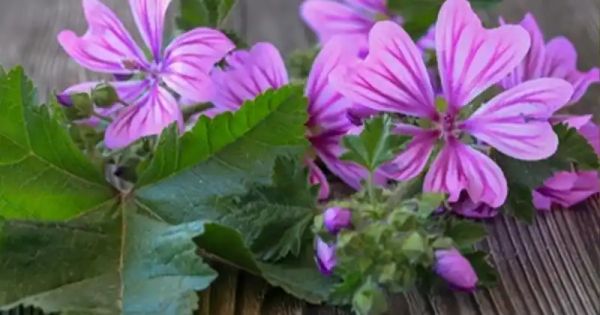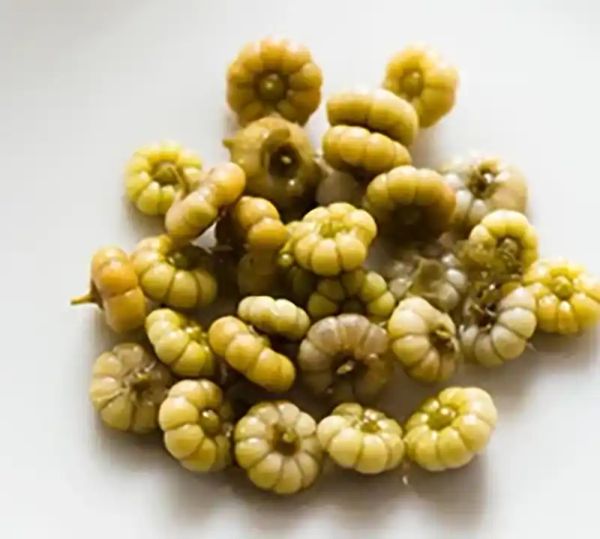
In the vast tapestry of the botanical world, few plants have woven themselves into human history and wellness practices as seamlessly as Malva neglecta and Malva sylvestris, commonly known as common mallow and high mallow respectively. These resilient and widespread species belong to the Malvaceae family, a group known for its significant cultural, medicinal, and culinary contributions across civilizations. With a rich tapestry of folklore, historical use, and emerging scientific research supporting their benefits, these plants offer a unique blend of tradition and modernity in the pursuit of health and well-being.
Uses and Health Benefits
Malva Neglecta (Common Mallow)
Digestive Aid: Common mallow’s soothing properties can ease irritation in the digestive system, making it an excellent natural remedy for issues such as gastritis, irritable bowel syndrome (IBS), and heartburn. It can provide a protective layer on the digestive lining, promoting healing and comfort.
Respiratory Relief: Common mallow plays a significant role in respiratory health. It can help alleviate symptoms of common colds, bronchitis, and sore throats by soothing irritated mucous membranes and facilitating the expulsion of mucus.
Anti-inflammatory Properties: Common mallow’s anti-inflammatory effects are beneficial in reducing swelling and pain in conditions like arthritis and muscle aches. Applying a poultice made from the leaves or drinking the tea can help mitigate inflammation both internally and externally.
Immune System Support: Common mallow can bolster the immune system, protecting the body from oxidative stress and aiding in the fight against infections. Its immune-boosting capabilities are thanks to its antioxidants, vitamins, and minerals.
Urinary Health: Malva neglecta has been used traditionally to support urinary tract health. It acts as a diuretic, helping in flushing out toxins and reducing the risk of urinary tract infections. Its soothing properties also relieve discomfort associated with inflammation in the urinary system.
Skin Care: Common mallow is prized for its skin-healing properties. It can hydrate and soothe skin irritation, eczema, and dermatitis. Applied topically, it can help heal wounds, bites, and burns.
Antioxidant-rich: Common mallow is a source of powerful antioxidants, which can combat free radicals and contribute to overall health. This antioxidant activity supports cardiovascular health by maintaining healthy blood pressure levels and reducing cholesterol.
Culinary Uses: Common mallow is not only beneficial for health, but it’s also edible and nutritious. The leaves, stems, and flowers can be added to salads, soups, and stews, providing a nutritious boost.
Incorporating Malva neglecta into your wellness routine or diet can offer a holistic approach to health, tapping into centuries of traditional use backed by modern research. Whether used for its medicinal properties or as a nutritious addition to meals, common mallow stands out as a versatile and valuable plant in the realm of natural health and wellness.
Malva Sylvestris (High Mallow):
1. Anti-inflammatory Properties: Malva sylvestris is renowned for its potent anti-inflammatory effects, making it an excellent remedy for various conditions. It reduces swelling and eases pain, making it particularly beneficial for treating sore throats, gastrointestinal inflammation, and irritation of the mucous membranes.
2. Respiratory Relief: The plant’s expectorant properties make it a valuable ally against respiratory ailments. Teas and syrups made from high mallow can alleviate symptoms of the common cold, bronchitis, and even asthma. It offers a soothing natural solution for those seeking relief from respiratory discomfort.
3. Wound Healing and Skin Care: High mallow’s soothing properties are not only beneficial for the digestive tract but also for the skin. Applied topically, preparations from the plant can accelerate wound healing, reduce inflammation in cases of eczema or dermatitis, and provide relief from insect bites and burns. Its emollient properties make it an ideal ingredient in hydrating and soothing lotions and creams.
4. Antioxidant Effects: Malva sylvestris contains powerful antioxidants that protect the body from oxidative stress and cellular damage. Consuming high mallow in teas or other preparations can contribute to a robust defense against the aging process and various health conditions.
5. Digestive Health: Similar to its cousin, Malva sylvestris aids in soothing and protecting the digestive system. It calms the digestive tract, ensuring a smoother digestion process and alleviating discomfort associated with gastrointestinal issues.
6. Urinary Tract Support: High mallow has diuretic properties that promote the production and flow of urine, aiding in the detoxification process of the body. This can be particularly beneficial in treating urinary tract infections (UTIs) and preventing the formation of kidney stones.
Incorporating Malva sylvestris into wellness routines, whether through teas, topical applications, or dietary supplements, can offer a broad spectrum of health benefits. Its rich composition and multifaceted therapeutic properties make it a valuable herb in the pursuit of natural health and well-being. As with any herbal remedy, it’s essential to consult with a healthcare professional before integrating high mallow into your health regimen, especially if you have existing health conditions or are taking other medications.
Harnessing the Benefits of Malva Neglecta and Malva Sylvestris
To fully enjoy the myriad benefits of Malva neglecta and Malva sylvestris, understanding how to properly utilize these plants is key. Both species can be used in various forms, including teas, poultices, and infusions, each method extracting the plant’s beneficial properties in different ways.
Preparing Teas and Infusions
Teas: To make a therapeutic tea, steep 1-2 teaspoons of dried leaves or flowers in boiling water for 10-15 minutes. This gentle process helps in releasing the plant’s beneficial compounds, ideal for soothing digestive issues and respiratory conditions.
Infusions: Place a handful of fresh or dried leaves in a jar, cover with boiling water, and let it steep overnight. Strained the next morning, this potent infusion can be used for skin washes or as a base for creams.
Creating Poultices for Topical Use
Crush fresh leaves of either mallow species into a pulp, apply directly to the affected area, and secure with a bandage. This method is particularly effective for eczema, minor burns, and insect bites.
Preservation and Storage
Drying is the most common method for preserving the leaves and flowers of mallow plants. Once completely dry, store them in airtight containers in a cool, dark place to maintain their medicinal qualities.
Disclaimer
While Malva neglecta and Malva sylvestris have been used traditionally for their health benefits, this article does not constitute medical advice. Always consult with a healthcare professional before starting any new treatment or herbal supplementation, especially if you are pregnant, nursing, or on medication.
Concluding Thoughts
Malva neglecta and Malva sylvestris, with their gentle yet profound healing properties, stand as testaments to the power of nature in supporting human health and well-being. By understanding how to harness their benefits responsibly and sustainably, we can incorporate these versatile plants into our wellness routines, bridging the gap between traditional herbal wisdom and modern-day health practices. As we continue to explore the depths of botanical medicine, let the gentle giants of the plant world remind us of the enduring connection between nature and our health.







